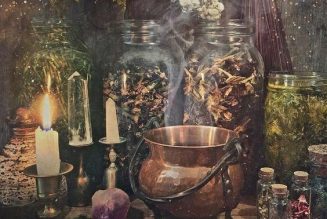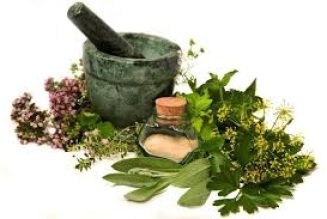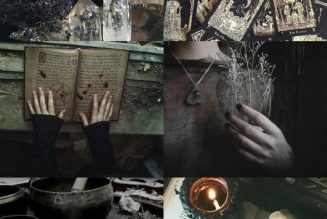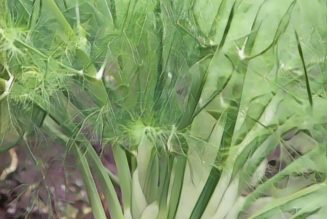The rose, belonging to the genus Rosa, is one of the most iconic and beloved flowering plants in the world. With over 300 species and thousands of cultivars, roses have enchanted humanity for millennia, gracing gardens, wild landscapes, and sacred spaces alike.
Botanically, roses are perennial shrubs with woody stems, often armed with sharp thorns that serve as natural protection. Their leaves are typically pinnate, composed of oval, serrated leaflets arranged along the stem, and their roots anchor deeply into the earth, stabilizing soil and supporting diverse ecosystems.
The flowers themselves are renowned for their layered, velvety petals, which come in a breathtaking array of colors—from deep, passionate reds and soft pinks to pure whites, sunny yellows, and even rare blues and purples. Each blossom spirals from the center, creating a symbol of unfolding beauty and mystery.
After the bloom fades, roses produce round, reddish-orange fruits known as rose hips. These hips are not only visually striking but are also packed with vitamin C, antioxidants, and essential fatty acids, making them a valuable resource in both traditional and modern herbal medicine.
The historical significance of the rose stretches back thousands of years. In ancient Persia, roses were cultivated in royal gardens and celebrated in poetry as emblems of love and spiritual longing. The Greeks and Romans revered the rose as sacred to goddesses of love—Aphrodite and Venus—using its petals in festivals, rituals, and even as confetti at weddings.
In medieval Europe, the rose became a symbol of secrecy and confidentiality, giving rise to the phrase “sub rosa,” meaning “under the rose.” Roses adorned the ceilings of council chambers, reminding those present that all discussions were to remain confidential. The rose also became a heraldic symbol, representing noble houses and dynasties, most famously in the Wars of the Roses between the houses of Lancaster and York.
Across cultures, the rose has been woven into myths, legends, and spiritual traditions. In Sufi mysticism, the rose represents the soul’s journey toward divine love. In Christian iconography, the rose is associated with the Virgin Mary, symbolizing purity, grace, and the unfolding of spiritual wisdom.
Culturally, roses are synonymous with love, passion, and romance. They are exchanged as tokens of affection, featured in art and literature as emblems of desire, purity, and transformation, and used in celebrations from weddings to funerals, marking the full spectrum of human emotion.
Medicinally, roses have a long history of use. Rose petals are mildly astringent and soothing, making them ideal for teas, syrups, and topical preparations that calm inflammation and support skin health. Rose hips, rich in vitamin C, have been used to boost immunity, treat colds, and promote healing. Rose water, distilled from the petals, is a gentle tonic for the skin and a fragrant addition to culinary and cosmetic recipes.
In witchcraft and magical traditions, the rose is a flower of deep magic and mystery, revered for its powerful spiritual properties and its ability to bridge the worlds of the mundane and the mystical. Roses are considered feminine, linked to the elements of both fire and water, embodying the passionate spark of love and the flowing energy of emotion and intuition.
Astrologically, roses are ruled by the planets Venus and Mars, connecting them to both the gentle, nurturing aspects of love and the fierce, protective energies of desire and will. The rose is sacred to deities of love, beauty, and fertility—Aphrodite, Venus, Isis, and Eros among them. In magical traditions, roses are often used to invoke these goddesses, to honor their presence, or to seek their blessings in matters of the heart.
The magical powers of the rose are vast and varied. Roses are used for love, healing, divination, luck, protection, psychic enhancement, and spiritual transformation. Their energy is gentle yet potent, making them a favorite in spells and rituals for both beginners and experienced practitioners.
Rose petals are a classic ingredient in love spells and rituals. To attract true love, scatter fresh or dried rose petals in a circle and stand within it, visualizing your heart’s desire. For mending relationships, write the names of those involved on a slip of paper, wrap it in rose petals, and tie it with pink thread, then bury it beneath a blooming rose bush to encourage reconciliation and harmony.
For dream magic, place dried rose petals under your pillow to protect your dreams and invite prophetic visions. In some traditions, a sachet of rose petals, lavender, and mugwort is sewn and kept near the bed to enhance psychic awareness and encourage restful sleep.
Rose hips, the fruit of the rose, are powerful charms for protection and healing. String rose hips into beads and wear them as a necklace to ward off negativity and illness, or carry a pouch of rose hips for good luck and safe travels.
Rose water, distilled from the petals, is a versatile magical tool. Sprinkle it around your home to cleanse and bless the space, or add it to ritual baths to attract love and beauty. Anoint your third eye with rose water before divination to open your psychic senses, or dab it on your temples to soothe headaches and calm the mind.
In ritual work, roses are often placed on altars as offerings to deities or spirits, or woven into garlands and crowns for handfastings and celebrations of love. Burning dried rose petals as incense can purify a space, draw in loving energies, and banish sorrow or heartache.
Folklore tells of roses blooming where tears of the goddess fell, or of roses growing from the blood of martyrs, symbolizing the union of suffering and beauty, and the promise of renewal. In some legends, a single white rose turning red marks the transformation of innocence into passion.
Beyond their magical and medicinal uses, roses play a vital ecological role. Their blossoms attract bees, butterflies, and other pollinators, while their dense thickets provide shelter for birds and small animals. Wild roses help stabilize soil and prevent erosion, making them important allies in natural landscapes.
In practical witchcraft, roses can be incorporated into daily rituals in countless ways. Add rose petals to bathwater for self-love and healing, create rose-infused oils for anointing candles or tools, or craft protective charms by tying dried petals in red cloth and hanging them above doorways. Even a simple act of tending to a rose bush can become a mindful, magical practice, connecting you to the cycles of growth, bloom, and renewal.
The rose’s enduring allure lies in its ability to embody both the sweetness of love and the strength of protection. Whether used in spells, charms, medicine, or daily rituals, the rose remains a cherished ally in witchcraft and beyond, offering beauty, magic, and wisdom to all who seek its gifts. Its presence reminds us that even among thorns, beauty and healing can flourish, and that the journey of the heart is always worth embracing.































